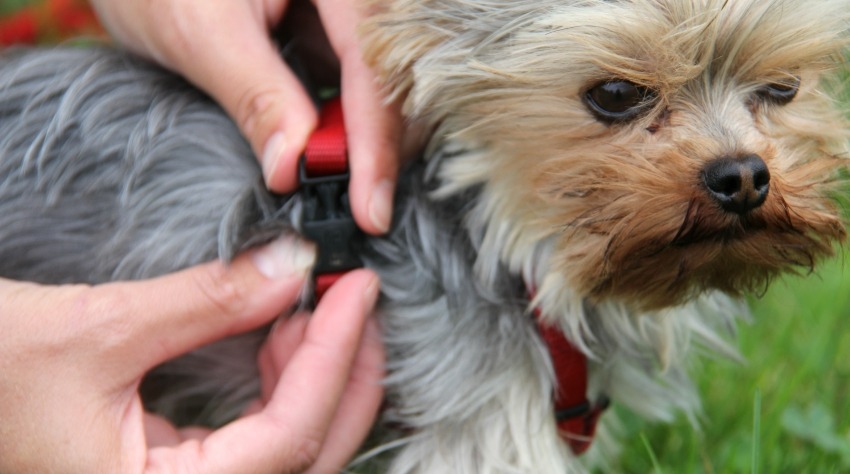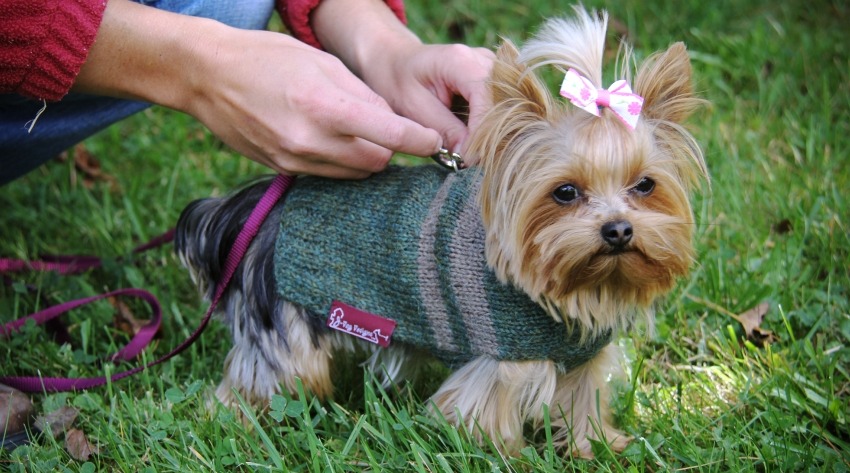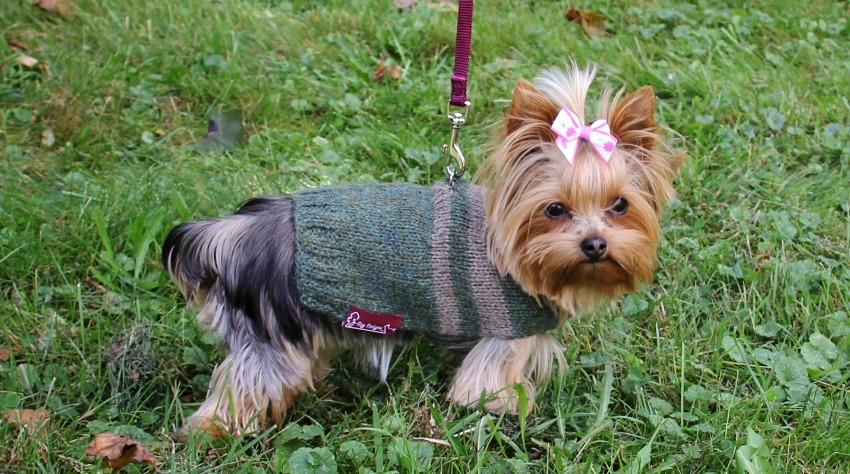Importance of a Harness
Many owners of small dogs have heard the classic “goose-honking” imitation put on by their small dogs in times of excitement. Small breed dogs often suffer from a condition known as a collapsing trachea.
The trachea is the pipe connecting the nose, mouth, and throat to the lungs. Oxygen travels down the trachea when the an animal inhales and carbon dioxide travels up it when an animal exhales. This structure is made up of ‘C’ shaped rings of cartilage connected by soft tissue. Each end of the ‘C’ shaped ring is connected by a muscle. In many small dogs, the muscle becomes loose- allowing the muscle to sag and flutter as air moves into and out of the trachea.
The symptoms most commonly arise at times of hyper-excitement by the dog. The animal begins to breath faster and the force with which they move air through the trachea is stronger. This increase in breathing results in the muscle ticking the lining of the trachea which leads to coughing. The coughing causes the dog to gasp for more air which in turn causes more irritation and coughing. The situation can escalate to complete collapse of the trachea (much like a straw collapses on itself when trying to suck up a thick milkshake) and interruption in the animal’s ability to breath- leading to distress.
The condition most frequently presents in middle-aged toy breeds such as Pomeranians, Poodles, and Yorkshire Terriers. Factors that can predispose dogs to developing symptoms include: obesity, respiratory infection, respiratory irritants in the environment, and an enlarged heart. Treatments vary from antibiotics, cough suppressants, bronchodilators, and corticosteroids to surgery.
In addition, small dogs should always be walked with a harness instead of a collar. A collar can occlude the dog’s airway further as they pull against the leash or you are forced to pull back on the leash to redirect the dog’s attention. A harness, on the other hand, moves the pressure lower and distributes the pull away from the throat and onto the chest.
This becomes a problem in cold weather when wearing a sweater which provides a leash hole but no access at the point of the clip on a harness. For this reason, I have developed a sweater with a leash hole just behind the level of the front legs where a harness clip would most commonly be located. This allows the dog to wear the harness beneath the sweater so he stays warm and comfortable on a walk



